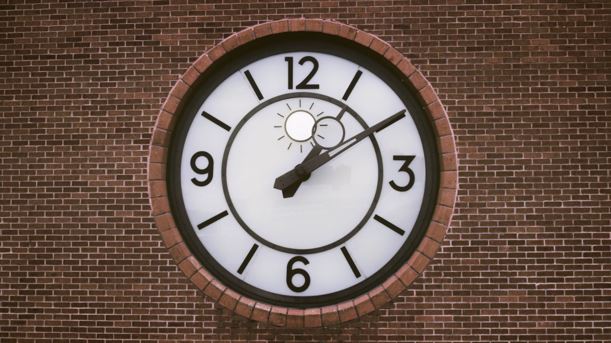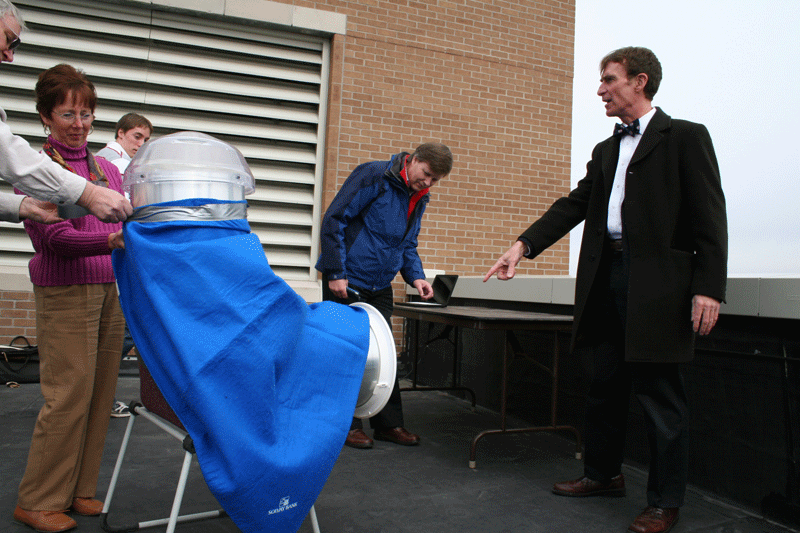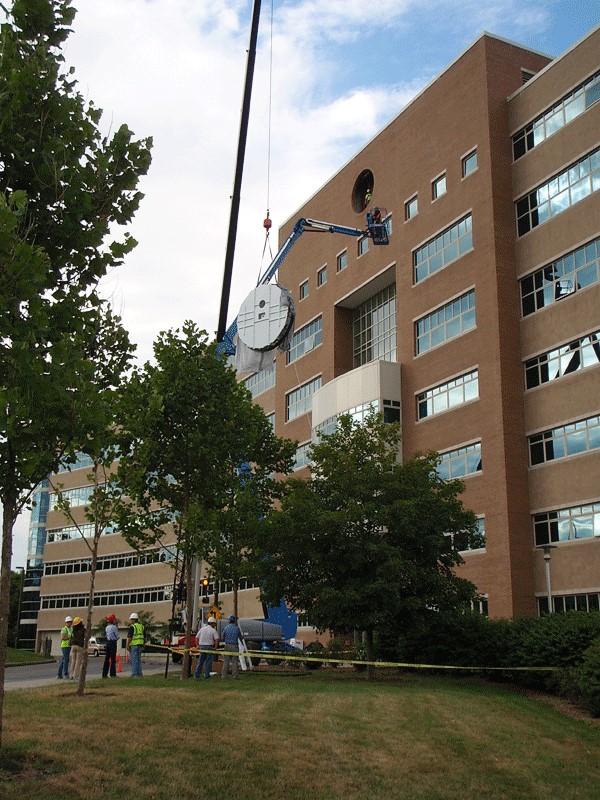
Daylighting for Science with Bill Nye

Bill Nye, world-famous “science guy,” climate advocate and former Cornell University mechanical engineering student, recently returned to his alma mater. He made the visit to see the recent modifications and upgrades that a group of current engineering students made to his Solar Noon Clock.
In the early 2000s, Nye served as a visiting professor for the university and would often walk past Rhodes Hall. He was always bothered by the blank concrete circle in the center of the building’s parapet.
“It just didn’t look right—somebody meant to put a clock there,” Nye remembers thinking. “Let’s put a clock there!”
The TV personality didn’t want a regular clock, and the idea for his Solar Noon Clock was born.

You may find yourself asking, “what is solar noon?”
Solar noon is when the sun is at the highest point in the sky. It can vary from traditional noon by as much as 20 minutes. For centuries, sailors used solar noon for navigational purposes.
“You would wait, wait, wait for the sun to be the highest in the sky— ‘make it noon’ is the expression,” Nye explains. “Then, you would calculate everything about your position on the Earth’s surface.”
The clock was inspired by Ned Nye, the famous engineer’s father. He was an amateur astronomer who used make-shift sundials cut from a shovel’s handles to understand how much time had passed while being held as a POW during World War II. Nye senior later wrote a book and newspaper columns about sundials and instilled a love for astronomy, science and timekeeping in his son.
Daylighting for Science
During the original design and building of the Solar Noon Clock, Nye struggled to find a way to naturally illuminate the clock only at solar noon. His calculations proved he would need a daylighting device that would stretch almost 60 feet long, which initially seemed impossible. That was until he remembered his two Solatube tubular skylights in his own eco-friendly home back in LA.
Solatube tubular skylights start with domes that sit on the roof of a building, engineered to capture sunlight from virtually any angle, even on cloudy days. They then push that light into the building space via highly reflective tubes and fixtures that diffuse it for a beautiful spread of natural light into the area beneath. Nye specifically was thinking of his Solar-Powered Daylight Dimmer model which also includes a solar-powered baffle built into the daylighting system that opens and closes to be able to dim the space.
Nye knew Solatube was the perfect solution.
With the help of mechanical and aerospace engineering professor Michel Louge and a group of engineering students, they programmed and designed an indicator to tell the dimmers of the Solatube to open and close at the correct time each day. The original Solar Noon Clock was unveiled in August 2011 during a daylong celebration. Nye wanted the clock to inspire students to ponder their place among the stars through the joy of discovery, and it did.
Then, in April of 2019, the software controlling the solar noon indicator failed. It suddenly began reading the date as 2099, throwing off the clock’s indicator and impairing its accuracy. This inaccuracy prevented it from calculating exactly when solar noon was each day. After being delayed during the pandemic, the project to fix the solar clock started in the fall of 2021. It was composed of a team of mechanical engineering students led by electrical and computer engineering senior lecturer Joe Skovira, Ph.D. ’90.
The students designed a replacement control system and developed new software to fix the original problem while adding redundancies for stability and backup. The clock was fixed, and Nye came to visit.
“That’s a feature of coming back to campus after 45 years—it’s [knowing] you’re gonna die, and so what you want in a gizmo like this clock on Rhodes Hall is for it to work for a long time. You want it to have a life like McGraw Tower. It’s venerable. It’s beautiful. It’s part of our history,” said Nye.
Thanks to the group of bright and resourceful mechanical engineering students and the endless daylight from Solatube tubular daylighting systems, Cornell University’s Solar Noon clock will be inspiring generations of future scientists, engineers and innovators for years to come, much like the clock’s creator. “I hope it gives you pause for thought about your place in space,” concluded Nye.
Are you curious to see how the clock works for yourself? You can see the live footage of the clock here.
If you want to discover more creative ways Solatube Daylighting Systems have been used around the word, visit solatube.com/commercial/vertical-markets_case-studies
